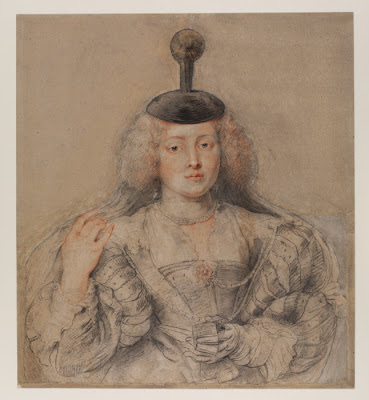 |
| This box "sold" for $400,000 but the winning bidder can't be forced to pay. |
An auction house must disclose the name of the seller -- in writing -- if it wants to collect on the sale when the purchaser refuses to pay up, a New York State appellate court has ruled. This comes upon the auction industry as a shock, given the universal practice that keeps the seller's identity confidential -- upon the seller's request.
The lawsuit that resulted in the ruling was brought by one of the smaller auction houses, William J. Jenack Estate Appraisers & Associates in Chester, New York, to force the winning bidder for an elaborately decorated box to pay up, and the September 19 decision has been largely ignored outside the specialized antiques trade.
But it is such a potential game-changer that Christie's is reportedly joining in Jenack's appeal to New York's highest court. Christie's declined to comment.
If the ruling is upheld or not heard on further appeal, "it seems to me that it will be a radical change because so many people want their identity to be confidential," said Peter R. Stern of the New York law firm McLaughlin & Stern, who advises collectors and artists' estates and for nearly 25 years was outside counsel to a major auction house.
Privacy, Tax Evasion, and Money Laundering
The reasons for anonymity range all the way from simple concern for privacy to tax evasion and money laundering -- tax evasion is "a regular occurrence" and money laundering "a driving force in certain territories," according to the Economist's art market writer Sarah Thornton (the quotes are from her widely cited recent article in TAR magazine).
In the litigation, Jenack sued a telephone bidder, Albert Rabizadeh, to recover $400,000 that Rabizadeh had bid in 2008 for what was described as a 19th-century Russian gilt-lined box. Rabizadeh had neither paid for the box nor taken possession of it.
The lower court decided in favor of the auctioneer, but a unanimous four-judge panel of the Appellate Division's Second Department ruled that the contract of sale was not enforceable because it did not name the consignor. It dismissed the complaint, leaving Rabizadeh with no obligation to make good on his bid.
Burden on Consignors and Auction Houses
The court acknowledged that its ruling is contrary to longstanding industry practice, but stated, "this Court is governed not by the practice in the trade, but by the relevant statute."
That statute is Section 5-701(a)(6) of New York's General Obligations Law, which describes the components of enforceable auction agreements. It states that "if the goods be sold at public auction, and the auctioneer at the time of the sale, enters in a sale book, a memorandum specifying the nature and price of the property sold, the terms of the sale, the name of the purchaser, and
the name of the person on whose account the sale was made, such memorandum is equivalent in effect to a note of contract or sale." (Italics added.)
The sale documents that auctioneer Jenack sought to force Rabizadeh to pay on did not reveal the name of the person on whose account the property was sold -- that person was identified instead only by a number -- and therefore, in the court's view, Jenack did not have an enforceable contract.
To the extent that the statute "may be at odds with the general industry practice, and may be burdensome to consignors or auction houses or both, a change in the law to eliminate that requirement may be warranted. However, consideration of the propriety of that change is not for the courts, but rests with the Legislature," the court wrote.
Changing How Collectors Sell
Could the decision change how collectors sell? "It could quite well happen that sellers would choose to go through a dealer, who doesn't have to disclose a name," said attorney Stern.
Steven Thomas, head of the art law practice at Irell Manella, who negotiated the Andy Warhol Foundation's consignment agreement to offer its inventory at Christie's, sees the decision as "not very significant because it's a narrow ruling on an odd and unique set of facts" that may well have turned on the auction house's failure to argue that naming itself as the seller's agent was enough to make the contract enforceable.
And the court itself may have set out the agency argument as the roadmap for the appeal. It noted that Jenack "does not argue, and, therefore, we do not consider, whether the requirement that the memorandum specify 'the name of the person on whose account the sale was made' was satisfied by inclusion . . . of its own name or the name of an agent of the consignor."
It is by no means certain, however, that an appeal will be heard. Like the U.S. Supreme Court, the New York Court of Appeals picks its cases carefully and hears relatively few, so the Second Department decision may well remain undisturbed as the highest court ruling.
For now, said Stern, "if you want to maintain confidentiality [in an auction house sale], you might run the risk of a bidder reneging. Reneging is not that common," though, he explained.
Image from Luxist.com.
Text (c) Copyright 2012 Laura Gilbert


















